There are a few FM stations around here that intentionally broadcast in mono. One is an FM talker, which from a technical standpoint makes a certain amount of sense since any particular human voice is a single-point sound generator.
The other FM station broadcasting in mono, WKZE, has a music format with a very eclectic playlist. It is a full Class A located in northwestern Connecticut. The idea with this station is to garner a larger and more reliable coverage area.
It comes down to a simple physics discussion about free space loss. The basic equation for free space power loss is:
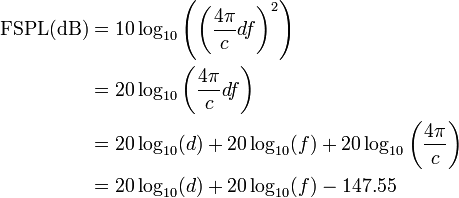
where:
 is the signal wavelength (in meters),
is the signal wavelength (in meters), is the signal frequency (in hertz),
is the signal frequency (in hertz), is the distance from the transmitter (in meters),
is the distance from the transmitter (in meters), is the speed of light in a vacuum, 2.99792458 × 108 metres per second.
is the speed of light in a vacuum, 2.99792458 × 108 metres per second.
That formula works for a single frequency, say the carrier frequency, for example. As the signal gets spread out by modulation, the power density on any given frequency is reduced as the energy is divided between many other frequencies.
First, free space loss takes into account the spreading out of electromagnetic energy in free space is determined by the inverse square law, i.e.
where:
 is the power per unit area or power spatial density (in watts per meter-squared) at distance
is the power per unit area or power spatial density (in watts per meter-squared) at distance  ,
, is the total power transmitted (in watts).
is the total power transmitted (in watts).
Second, with Frequency Modulation (FM), the power spectral density is a function of the differences in the highest and lowest frequency:
Therefore, the narrower the bandwidth of a signal, the higher the density of the received signal will be in relation to the transmitted power. An unmodulated FM signal will have a better, more reliable coverage area than a modulated one. Of course, we need to modulate the signal, otherwise, there is no point in having the transmitter on.
A baseband or composite FM signal has several components:

An FM station transmitting a mono signal will have a much lower bandwidth. With wideband FM, the modulation index is generally 2fΔ or two times the maximum audio input frequency. Thus, a mono FM broadcast station will have an approximate deviation of approximately 30 kHz (plus any ancillary services like RDS) vs a stereo FM station, which has a 75-80 kHz deviation using the same carrier power.
For higher power FM stations, FCC Class C and B, this is not much of an issue. Those stations tend to have a great deal headroom when it comes to power density, building penetration, multipath (picket fencing and capture effect). For Class A and LPFM stations, it is a different situation. For those stations, unless FM stereo broadcasting is truly needed, it should be turned off. On low power stations, stereo can be a great detriment to reliable coverage.




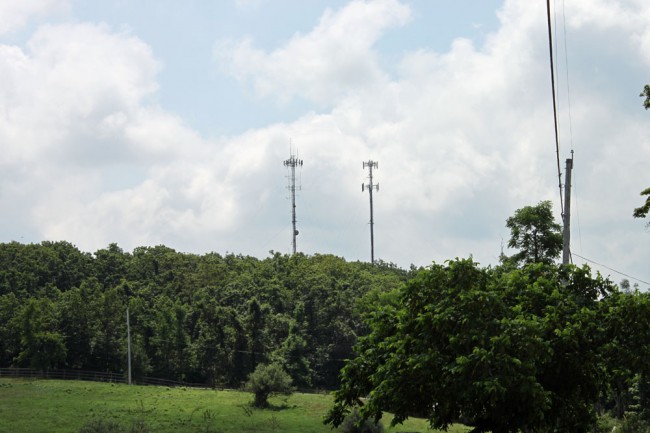
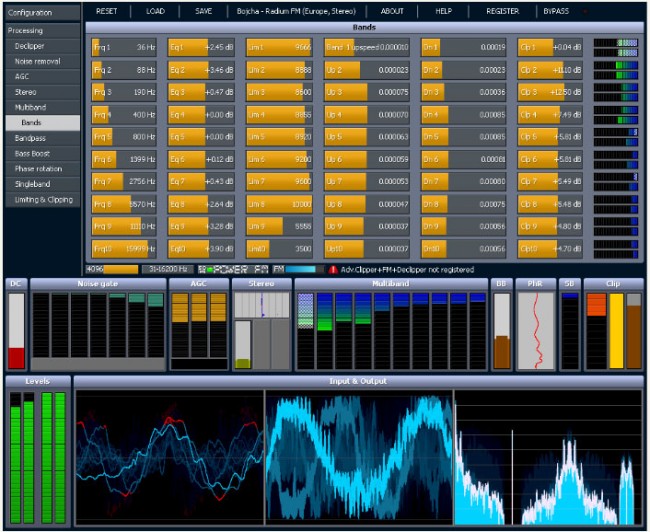
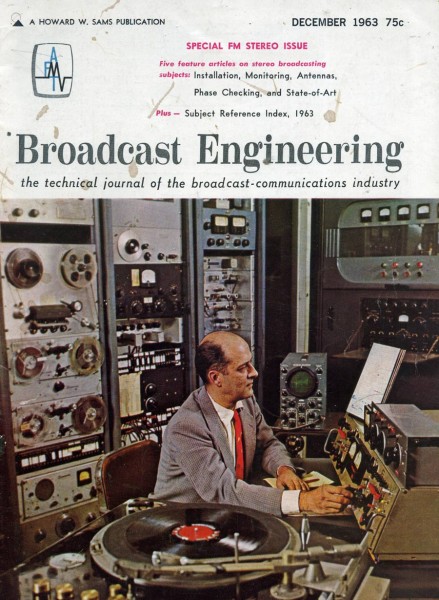
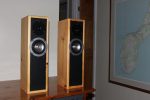
Aside from the bandwidth issues you cite here, there’s also the elimination of stereo background noise in the receiver. Many modern FM radios automatically switch back and forth between stereo and mono at low signal levels and the noise reduction in mono is striking. I often retract the whip antenna on portable radios to force monaural reception.
Also, does the ‘high blend’ function in automobile receivers react differently to a low level mono signal versus stereo?
FM mono sees wide used by the ABC down here for relays and regional etc. In our LPON band mono is almost universal.
Another great post!
For an FM broadcast transmission, the difference in propagation loss due to the difference between the highest and lowest frequency is negligible. At least it is on all of the tests I’ve ever done. I’ve not seen a FM station that had to deal with selective fading; flat fading (in which all of the frequencies of the station see the same attentuation) seems to rule the day. Since you’re talking about a transmission that has a bandwidth that is roughly 1/5th of 1% of the center frequency, using the center frequency for propagation loss and ignoring the bandwidth works out pretty well.
The one thing I’ve been curious about is the propagation model that FM stations use. You show the inverse square law model above, but that doesn’t take into account multipath, which would be the predominant method for most people, especially in a city. The Hata model or any of its variants don’t go down to 100 MHz (they bottom out at 150 MHz in the papers I’ve seen).
Lee, good point about stereo noise, old radio are especially prone to this.
Rob, does ABC use over the air FM relays for program transmission, or do they use satellites and or IP networks?
Gary, most FM propagation software programs use Longley Rice modeling. I used inverse square just to make a point about spectral density.
Not 100% sure if its IP or satellite but I suspect one of the two.
There’s also WLNG-FM in Sag Harbor, New York (east end of Long Island) which has transmitted in FM Mono since my childhood. I was always curious why they adopted this strategy but this landmark station is quite popular with both the locals as well as many outside the area. I never have to worry about my older FM radio’s blend circuit dropping in and out when outside of their coverage area.
I recall back in the day when mostly stations on the non-comm band would switch off their stereo subcarriers when airing talk programming but I suppose this has become a moot point with the adaptation of HD transmission.
I truly wonder whether many ordinary listeners would notice the difference between stero and mono broadcasts. It is my observation that most off-the-air listeners do not employ high-end equipment. A low power FM station might be better off running in mono. Years ago when we went to stereo at WLKI in Angola, Indiana (3kw) our coverage area shrank noticeably.
Here in Lubbock, Texas we have a talk radio station 104.3 FM that focuses on college sports (and particularly, Texas Tech sports). They transmit in monaural FM to great effect. Great coverage with dropouts being rare. Good job!
Physics is a wonderful thing.
FM propagation does suffer considerably from selective fading – it is at the heart of what you hear in mobile reception in areas with “picket fencing.” As you traverse one of these multi-path caused fades, the signal gets very distorted and loud. This is caused by a spectral hole sweeping across the channel and wiping out a moving block of sidebands (and at one point, the carrier).
One the reasons that the IBOC standard duplicates all the data in both subcarriers is to eliminate having the receiver unlock as the spectral hole sweeps through.
With little thought about the origin of picket fencing, it is obvious that there will be selective fading.
I am a broadcast consulting engineer and design and commission many stations every year. For rural stations, especially, especially those in rough terrain and with extensive fringe area listeners, I routinely set them up in mono.
My clients rarely receive calls about this when a station formerly in stereo switches to mono – most listeners are unaware of whether a signal is in mono or stereo now that the stereo light has all but disappeared from receivers. Listeners are also conditioned to listening in mono, since virtually all car radios blend to mono in poor signal conditions (and the stations where I implement mono transmission virtually all of the listeners are receiving a poor signal!) so have been listening in mono most of the time anyway without knowing it.
The coverage radius of stereo is about 66% that of mono. This translates to a coverage area of just 44% of mono! This can have a devastating affect on the ability of some stations to achieve their coverage objectives.
It’s funny, in the nearly half century that I have been in the business I am swinging full circle and building stations that transmit in mono with horizontal polarization!
Gray
==============================
Gray Frierson Haertig & Assoc.
4646 S.W. Council Crest Drive
Portland, Oregon 97239
503-282-2989
Thank you Paul for your site and for this thread in particular… which has got me thinking again about my snobbery re: stereo. I am consulting to a potential LPFM, just waiting on the CP (we are a singleton). It has been suggested to me to broadcast in mono – while we will feature music we will have almost an equal amount of talk.
For a poor layman like me… would I expect an “increase” in coverage beyond what’s protected (i.e. the 3.6mi/5km radius)? That obviously would make mono transmission more attractive too…
And is Gray’s suggestion at the end the way to go? horizontal as opposed to circular polarization for a mono station?
I cannot really predict how much the mono vs. stereo signal will change your coverage as much of it depends on what else is on your frequency. If you have a CP for a crowded frequency, then that will be the determining factor. All things being equal, I think Gray’s numbers above are accurate. I know that the class A station cited in the article covers reliably far outside of their 60 dBu contour.
When you build the station, I suggest you experiment with the stereo vs mono and see how you like it. As for antennas, I still believe a two bay, 1/2 wave spaced circularly polarized antenna is the optimum for a low power station.
Thank you Paul. The frequency is 106.1, and lies within interference contours of two full power stations (both at least 70 km away). My unscientific study of 106.1 v. 98.9 (my own car radio driving around town) was that 106.1’s interference was less.
And a good suggestion to experiment with both stereo and mono; the cost difference seems minimal; and I assume I can “turn off” the stereo generator on any LPFM transmitter which has it built in.
I will be able to get the type of antenna you suggest, lightly used, for about $550.
Another way of looking at this is comparing the bandwidth of mono and stereo signals and converting to dB. 53/15 equates to 5.48dB. Any good radio engineer immediately knows that a 5dB difference in power equates to a ratio of 3. Thus say you had a 10kW station broadcasting stereo, then if it started transmitting in mono it could reduce power to 3.3kW and maintain the same coverage area. The same is not really true the other way around because most modern receivers gradually reduce bandwidth and blend the stereo signal down to mono as the range increases (actually signal to noise ratio reduces). That is to say a 10kW station broadcasting in stereo has an identical mono coverage are to if it just broadcast in mono. There is a slight proviso to that statement – because the modulation index of a mono signal is less than a stereo one. Thus a mono signal can be “louder” than a stereo signal within the 75kHz maximum deviation allowance – this means the pure mono tranmission has a little more headroom above the noise level.
If you are interested in radio coverage prediction maps, then please consider using our service at RadioCoveragmaps.com. http://www.radiocoveragemaps.com
Great posts! But I didn’t see any mentions of “pre-emphasis”, a noise reduction system used only in MONO fm. By boosting high audio frequencies at transmission, and rolling them off at the receiver, (all done automatically — and only in MONO) mono fm reception ends up being even quieter than in the examples posted here.
Am I correct that it’s been suggested that the power density of a Mono FM signal will be greater than one in Stereo? The bandwidth, if the radio is properly adjusted in each case, should actually be roughly the same. Once we dump the pilot and the 38KHz signal, we are no longer modulating the carrier 100% e.g. we are no longer forcing it to swing 75KHz up or down on peaks. So, we turn the modulation up to 100%, creating a 75KHz swing for the mono signal alone. Whether we swing the frequency at a 38KHz rate or at a 15KHz rate, if we swing it 75KHz, we’ll occupy 150KHz of bandwidth. The dBu contour won’t move… we’ve not increased the transmitter RF output, so the RF footprint is the same whether we broadcast in stereo or not. Subjectively, there will be a fairly substantial increase in coverage mono to stereo as the noise floor is reduced.
The 75 uS pre-emphasis is also done to the composite (stereo) audio. So yes the stereo is pre-emphasised just like mono.
This is an excellent discussion and I’m really surprised that it’s not flooded with more questions. I do have one though. How do we prevent spectrum emissions from happening if we switch over to Mono. This recently happened to us, as we caused interfereancs in Mono but never a problem in Stereo. When in mono is there something else we’re supposed to do to prevent RF interfereance?
I remember working at a 3,000 watt FM in Kentucky in the late 70s. It was the only station, I actually worked at that had an Mono switch on the mixing board. By flipping the switch it killed the FM stereo sub-carrier. I would switch off the stereo on local ballgames which came over the telephone line. We got better coverage and the sound quality improved on mono sourced material.